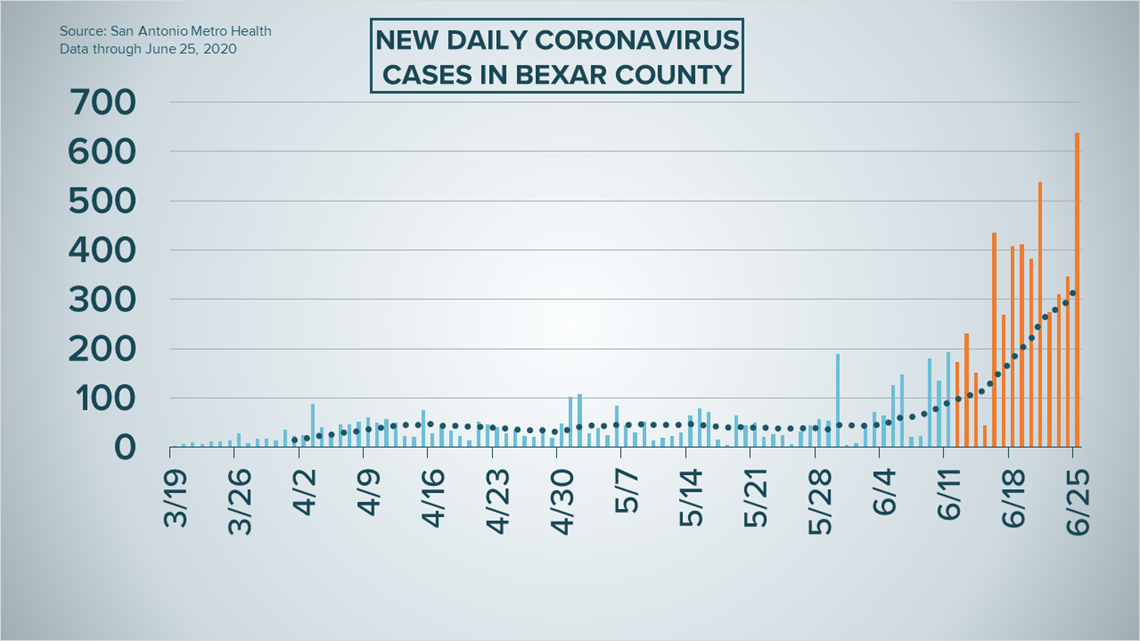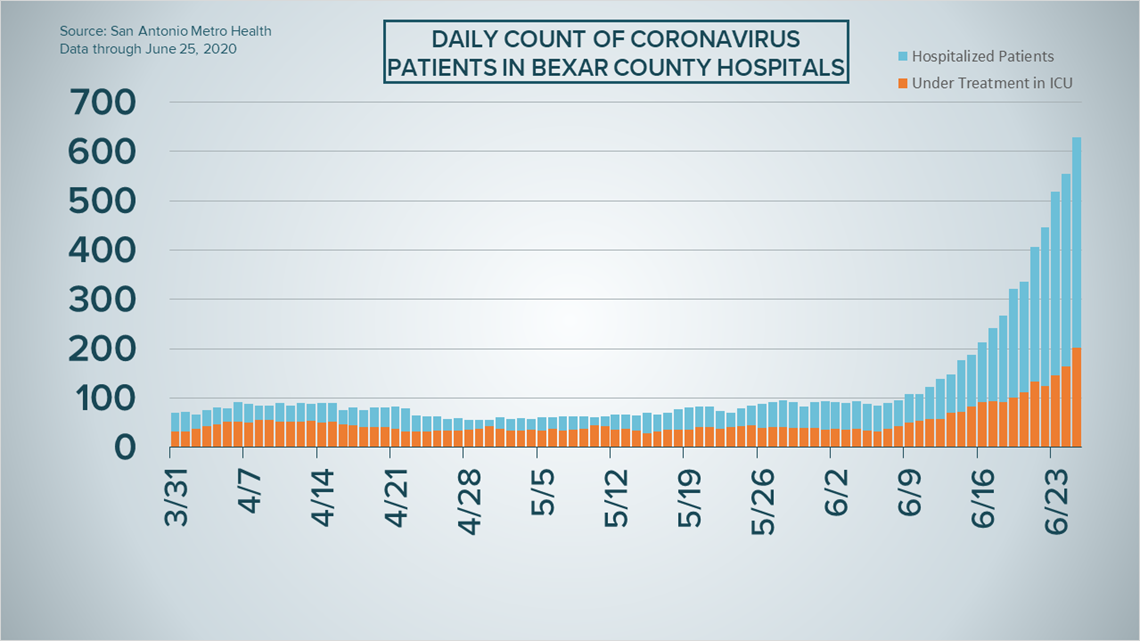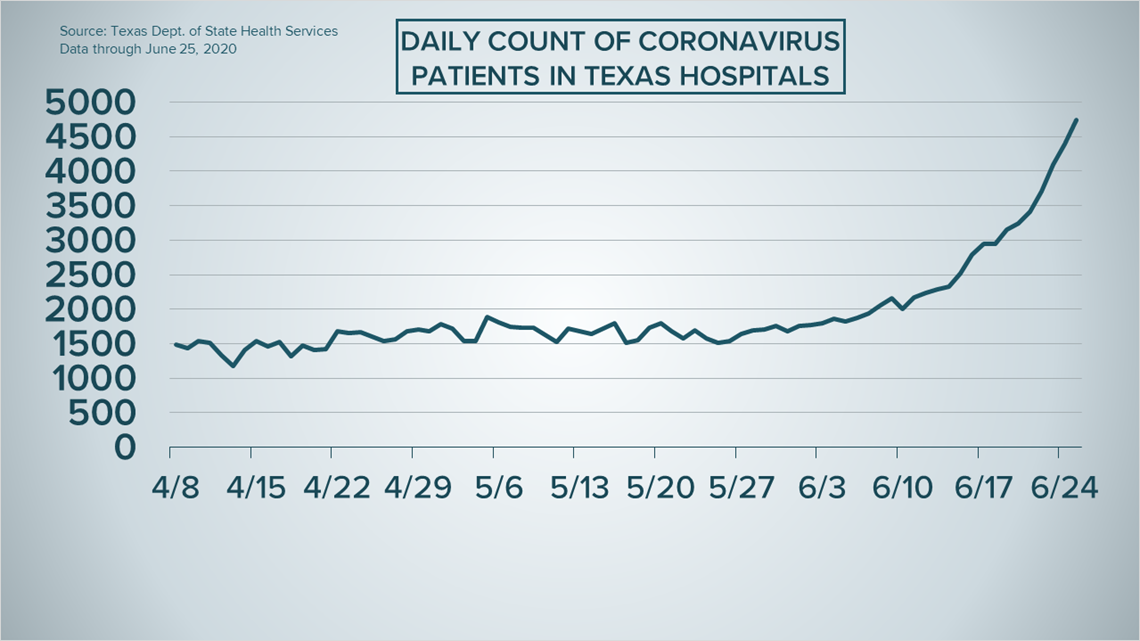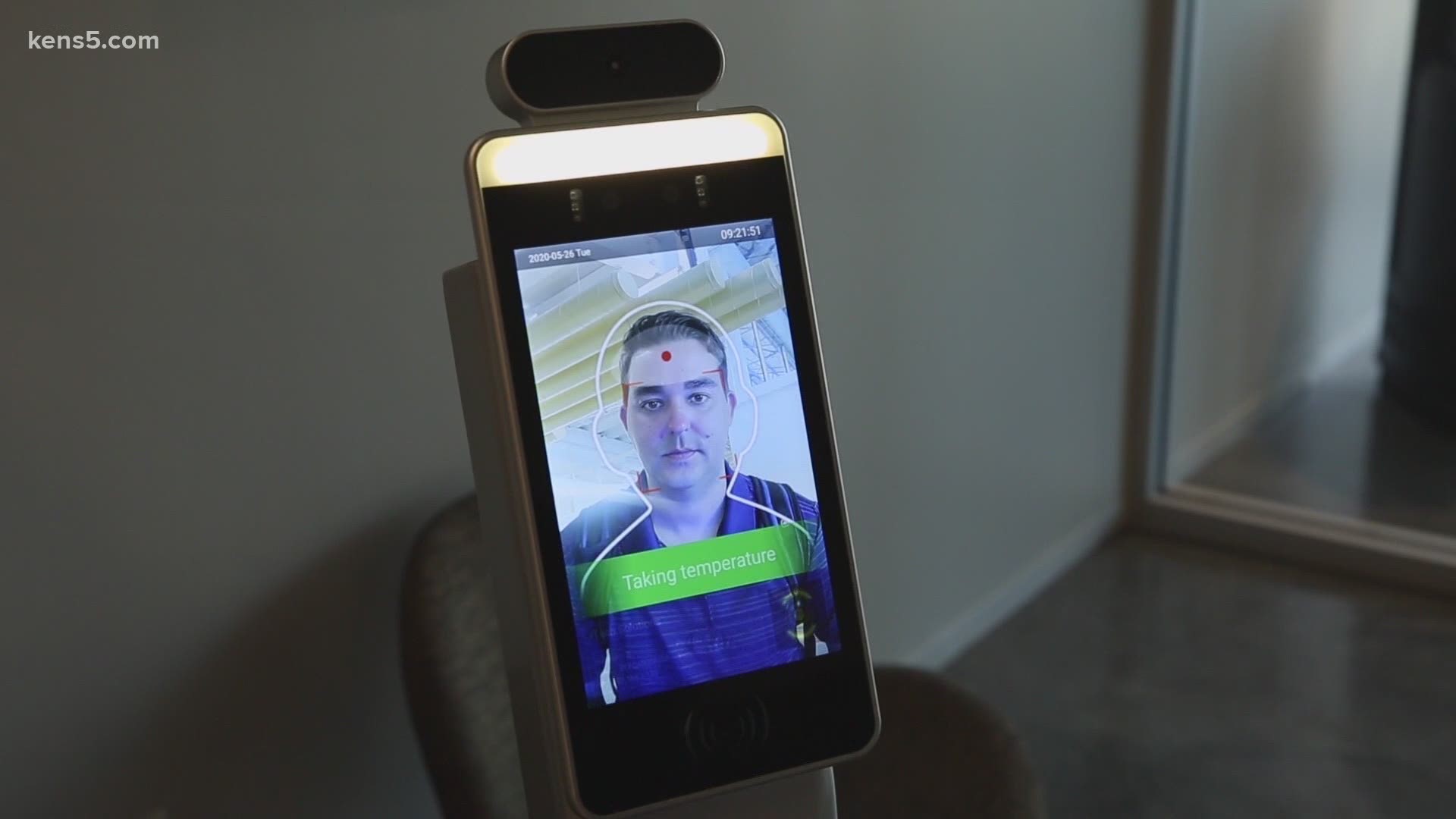SAN ANTONIO — We're tracking the latest numbers from the coronavirus pandemic in San Antonio and across Texas. Here are the latest numbers reported by Bexar and surrounding counties:
- Bexar County: 638 new cases were reported Thursday. There is a total of 8,452 cases and 104 fatalities in the county. 628 patients are in local hospitals.
- Comal County: The county reported 48 new cases Friday. There are 435 confirmed cases along with 117 probable, bringing the combined total to 552. Seven people have died in the county, while 225 have recovered. The positivity rate is now 9.2%.
- Hays County: 81 new cases Thursday, bringing the total to 2,275 cases and five fatalities in the county. 51.7% of the country's confirmed cases are people between the ages of 20 and 29.
Here are Thursday's full numbers. Bexar County reports them daily at 7 p.m.
How Bexar County is trending:
We're tracking how many coronavirus cases are confirmed in Bexar County each day from the time San Antonio Metro Health began reporting cases more than two months ago. Graphing those daily case numbers along a 14-day moving average provides an accurate picture of the curve in the San Antonio area and the direction we're heading amid the coronavirus.
Mayor Nirenberg reported 638 additional cases on Thursday, bringing the county total to 8,452. No new deaths were reported, leaving the total at 104.


628 patients are in local hospitals, a jump of 75 from yesterday. 202 patients are in intensive care, and 94 are currently on ventilators. June 8 was the last day with under 100 patients in area hospitals. We have seen a new record high each of the 17 days since, resulting in a 658% increase in that time.


Coronavirus in Texas
Texas reported 5,996 new COVID-19 cases Thursday, the third straight day for a new single-day record. Ten days ago was the first time the daily increase exceeded 3,000, and it has done so every day since.


4,739 Texans are currently hospitalized with the virus, marking the 13th day in a row with a new record high for that figure.


The state has an estimated 55,125 active cases, while 74,496 residents have recovered from the virus. 2,296 Texans have died from coronavirus. With 131,917 cases reported and 1,659,340 viral tests performed, the positivity rate is 7.9%.
Earlier Thursday, Gov. Greg Abbott announced a pause in the state's reopening plans due "to the recent increase in positive COVID-19 cases and hospitalizations."
Businesses can continue to operate at current levels but should observe the health recommendations, protocols and requirements set by health officials, the governor said.
"The last thing we want to do as a state is go backwards and close down businesses," he stated in a release. "This temporary pause will help our state corral the spread until we can safely enter the next phase of opening our state for business."
Abbott also announced he was pausing elective surgeries in four of the state's largest counties: Bexar, Dallas, Harris and Travis.
Latest Coronavirus Headlines
- 'Full-speed into a brick wall': New hospitalization, COVID-19 case numbers paint bleak picture of worsening health situation in Bexar County
- VERIFY: Why a face mask box says it provides no protection to the wearer
- More than 1 million stimulus checks were sent to dead people, congressional watchdog finds
- SA company creates temperature-taking, mask-detecting kiosks
- Texas has nearly 6,000 new COVID-19 cases today, as Gov. Abbott pauses reopening
- CDC expands list of groups at higher risk of severe COVID-19 illness
- US health officials believe 20 million Americans have had coronavirus
Coronavirus symptoms
The symptoms of coronavirus can be similar to the flu or a bad cold. Symptoms include fever or chills, cough, shortness of breath or difficulty breathing, fatigue, muscle or body aches, headache, new loss of taste or smell sore throat, congestion or runny nose, nausea or vomiting and diarrhea, according to the Centers for Disease Control.
Most healthy people will have mild symptoms. A study of more than 72,000 patients by the Centers for Disease Control in China showed 80 percent of the cases there were mild.
But infections can cause pneumonia, severe acute respiratory syndrome, kidney failure, and even death, according to the World Health Organization. Older people with underlying health conditions are most at risk.
On June 25, the CDC expanded the list of groups at a higher risk of severe illness due to coronavirus.
Experts determined there was consistent evidence these conditions increase a person's risk, regardless of age:
- Chronic kidney disease
- COPD (chronic obstructive pulmonary disease)
- Obesity (BMI of 30 or higher)
- Immunocompromised state (weakened immune system) from solid organ transplant
- Serious heart conditions, such as heart failure, coronary artery disease, or cardiomyopathies
- Sickle cell disease
- Type 2 diabetes
The CDC believes symptoms may appear anywhere from two to 14 days after being exposed.
Human coronaviruses are usually spread...
- Between people who are in close contact with one another (within about 6 feet).
- Through respiratory droplets produced when an infected person coughs, sneezes or talks. These droplets can land in the mouths or noses of people who are nearby or possibly be inhaled into the lungs.
- Some recent studies have suggested that COVID-19 may be spread by people who are not showing symptoms.
Help stop the spread of coronavirus
- Stay home when you are sick.
- Eat and sleep separately from your family members
- Use different utensils and dishes
- Cover your cough or sneeze with your arm, not your hand.
- If you use a tissue, throw it in the trash.
Lower your risk
- Wash your hands often with soap and water for at least 20 seconds. If soap and water are not available, use an alcohol-based hand sanitizer.
- Avoid touching your eyes, nose, and mouth with unwashed hands.
- Avoid close contact with people who are sick.
- Clean and disinfect frequently touched objects and surfaces.
- The CDC recommends wearing a mask or cloth face covering if you have to be out due to an essential service or essential activity such as going to the grocery store.
- If you are 60 or over and have an underlying health condition such as cardiovascular disease, diabetes or respiratory illnesses like asthma or COPD, the World Health Organization advises you to try to avoid crowds or places where you might interact with people who are sick.

